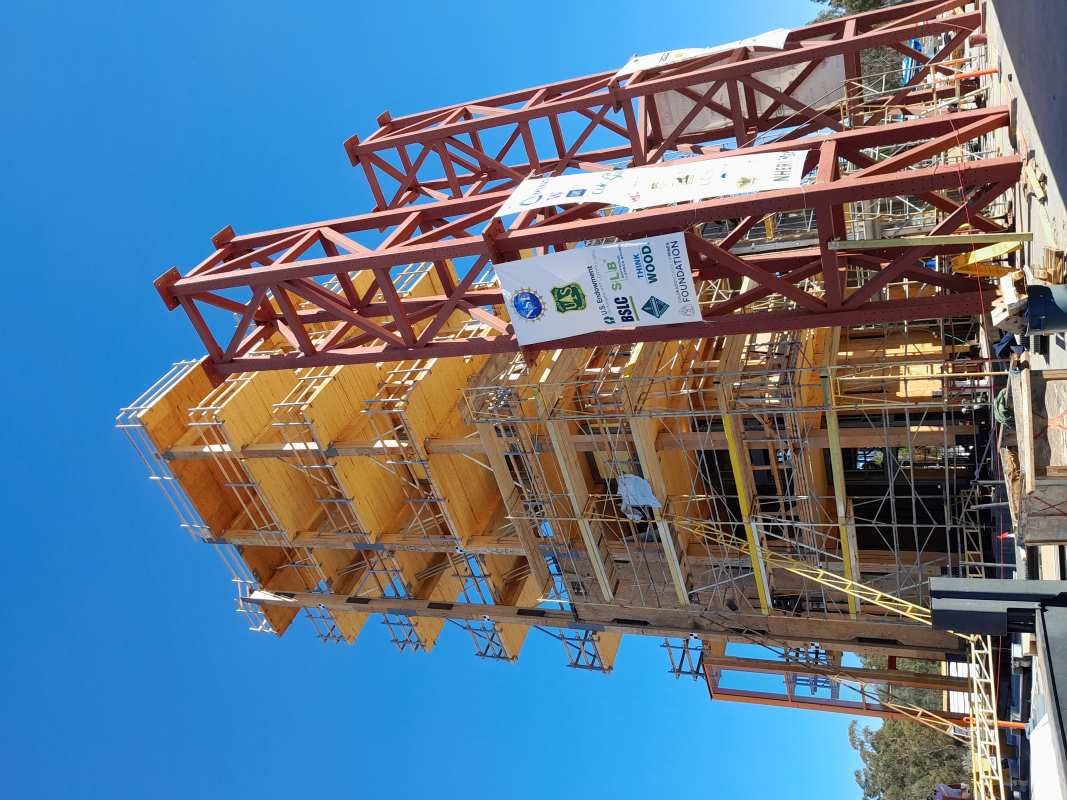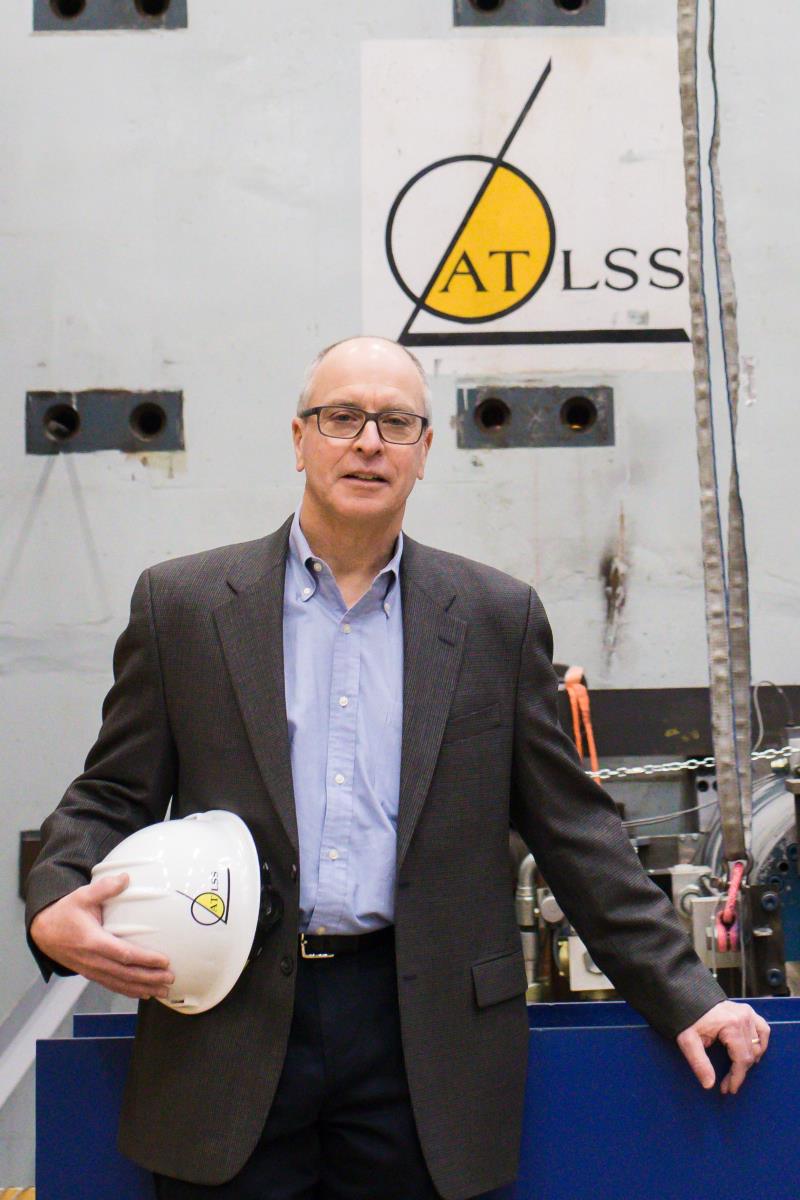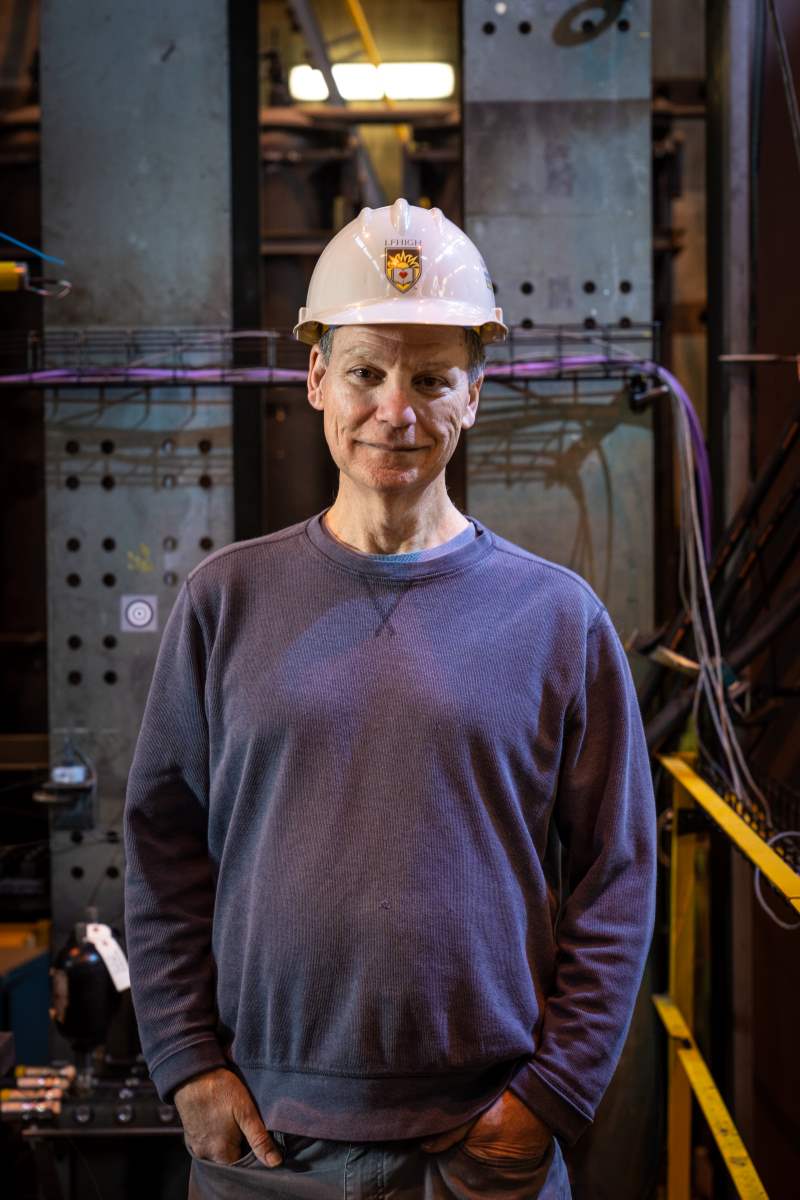Lehigh team’s work on a timber-based wall system capable of withstanding extreme seismic events while minimizing structural damage—part of the NHERI TallWood project—marks a step toward integrating more sustainable materials into building practices in earthquake-prone regions
A building’s resilience is measured by its ability to operate safely during—and after—extreme events. It may remain standing after an earthquake, but if damage is severe enough to make it uninhabitable, the building is not a resilient structure.
Traditionally, the materials used to promote resiliency under maximal loading caused by events like earthquakes have been steel and concrete—both of which have significant carbon footprints. According to the consulting firm McKinsey & Company, producing a ton of steel emits 1.85 tons of carbon dioxide into the atmosphere, while cement production accounts for a whopping 7 percent of global CO2 emissions.
“The construction industry is trying to reduce its carbon impact,” says Alia Amer ’23 PhD, a postdoctoral researcher at the Lehigh University National Hazards Engineering Research Infrastructure (NHERI) Real-Time Cyber-Physical Structural Systems Testing Laboratory. “And so the focus has shifted to timber, which historically didn’t give us the appropriate strength and stiffness for use in tall buildings located in seismic regions. But there are now engineered wood products that do provide those properties, and they can be made from trees that don’t need to grow very large. Our job is to better understand how this material behaves under earthquake loading conditions, so industry feels confident using it for these structures.”
Amer—supervised by Richard Sause, Joseph T. Stuart Professor of Structural Engineering, and James M. Ricles, Bruce G. Johnston Professor of Structural Engineering and director of Lehigh’s Advanced Technology for Large Structural Systems (ATLSS) Engineering Research Center and Lehigh’s Real-Time Multi-directional Earthquake Simulation Facility—succeeded in designing and testing a large-scale timber sub-assembly constructed with cross-laminated timber (CLT) rocking and glue-laminated (glulam) timber components that are able to survive an earthquake without suffering damage. The project is part of the NHERI TallWood project, funded by the National Science Foundation.
“There were no design guidelines,” says Ricles. “Alia had to do everything from the ground up when it came to figuring out how to build a shear wall made of timber, and all the connections—meaning the beams, columns, and brackets—so it could withstand an earthquake of very high magnitude. And she proved that it could work.”
Often, says Amer, when researchers test shear walls—lateral-force resisting systems—they attach an actuator, a device that produces force or displacement, to the wall to push the wall back and forth in the direction of the wall (called in-plane direction).
“But that’s not an accurate simulation because the earthquake comes in many directions, not only in-plane,” she says. “And there is a load path of the force, which is transferred from the floor to beams that collect this force (collector beam) then to the wall. Also, if we’re focusing on resilience and constructing buildings that experience limited, or what we call ‘low damage,’ after an earthquake, that resilience can’t just be displayed by the walls. The beams, columns, and connections are part of the load path and therefore also deforming during an earthquake. So you have to take all of that into account when you are designing and testing.”
She and her team built a prototype in ATLSS. They began by iterating on a design practice called a self-centering system, in which the walls aren’t adhered to the foundation but allowed to rock under lateral loading.
“It’s called post-tensioning,” says Ricles. “Think of a rubber band placed through a wall that allows the wall to move and then come back. So if a gap opens up, it will close. We’ve done a lot of work on self-centering systems with concrete shear walls and have proven that they can be designed to avoid damage, even under very extreme events. Lehigh is world-renowned for this now. So when we started working with timber, we knew immediately that in order to make tall timber buildings resilient, they had to go with the flow. And going with the flow means being able to rock.”
They adapted the post-tensioning concept for timber and designed each piece of the prototype so that it would move and deform under lateral drift. Using a multi-directional test bed, they then subjected it to forces from multiple directions and tracked the damage. They found that the system self-centered no matter which direction the loads originated.
“When we inspected it, we found no permanent deformation,” says Amer. “We successfully designed a low-damage system that incorporated all the components.”
To close the loop, in a sense, they also designed a repair approach. Low damage does not mean no damage, and so the team developed a strategy that restored the structure to its initial state. They then retested it to determine if their approach was effective.
“We still have more work to do, but we tested the wall more than 300 times, and each time, we were able to restore the lateral stiffness and strength of it,” she says.
The team has presented their findings and published their work. Their findings were also incorporated into a 10-story mass timber structure (pictured, under construction above; credit: Shiling Pei/Colorado School of Mines) that was tested last year on a giant outdoor shake table at the University of California, San Diego. Researchers simulated magnitude 6.7 and 7.7 earthquakes and found very little damage to the structure.
The Lehigh team is now researching how different types of dampers located near the base of the wall in the test bed can further improve the system, as well as using visualization cameras to better track its three-dimensional movement.
The ultimate goal of the NHERI TallWood project is to develop design and construction guidelines for the rocking-wall system that can then be incorporated into building codes. Once the method is codified, timber could become a viable, greener alternative material for tall buildings.
“I think what’s most exciting about this project to date is that we met our objective. The system can survive just about any damage,” says Ricles. “And that shocks a lot of people because traditionally, engineers designed systems to survive an earthquake that led to damage but avoided collapse. But if the building is condemned because of damage, it’s essentially the same result. We wanted to design something that could continue to function—and do it with timber. And that’s exactly what we did.”
Related Links
- Lehigh University National Hazards Engineering Research Infrastructure Real-Time Cyber-Physical Structural Systems Testing Lab
- Lehigh University Real-Time Multi-directional Earthquake Simulation Facility
- NHERI TallWood
- Faculty Profile: Richard Sause
- Faculty Profile: James M. Ricles
Media Coverage
- NHERI Stories—Diverse Paths to Engineering: Alia Amer
- UC San Diego Today: "Tallest Full-scale Building Ever Built on an Earthquake Simulator Put to the Test at UC San Diego"




